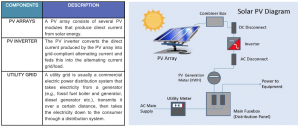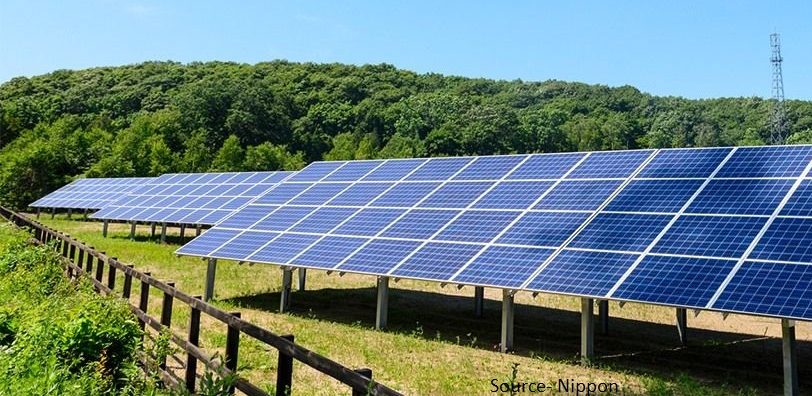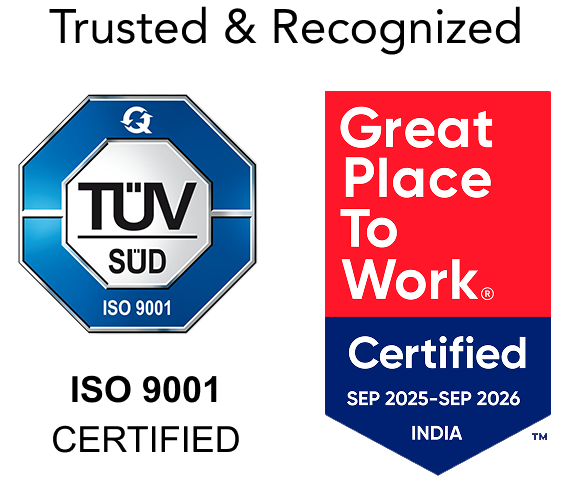Over the last couple of months, we’ve held multiple webinar sessions aimed at educating our audiences on solar power and how it can help you, both as an energy customer and potential investor with Distributed Energy. The below list of questions has been compiled based on the most common questions we’ve been asked during these webinar sessions. We’d like to share these with you in case you were someone that is interested in learning the basics of solar power or if you wanted to attend the webinar and didn’t get a chance to. We also have a dedicated FAQ section on our website, and it can be accessed by clicking here.
What is solar energy?
Solar energy is radiant light and heat that comes from the sun. This energy, which also happens to be the most abundant energy resource on Earth can be captured with various technologies, including renewable energy technologies such as solar panels. Each particle of sunlight (called a photon) that reaches the Earth’s surface contains energy that fuels our planet. The photovoltaic cells in a solar panel turn sunlight into direct current (DC) electricity. From there, the solar inverter (another component of the solar plant) converts the DC electricity into alternating current (AC) electricity, which is what we use to power our household appliances, fed to the grid, stored in batteries, etc. Fun fact – there is enough solar radiation hitting the surface of the planet each hour to theoretically fill our global energy needs for nearly an entire year.
Why is solar energy considered renewable?
Solar energy is considered a renewable/sustainable energy source because it originates from sources that are considered inexhaustible, unlike fossil fuels. These are sources of energy that replenish naturally on a human timescale. Solar energy is one type of renewable energy source. Other renewable energy sources include wind, hydro, geothermal, and biomass – all of which occur naturally. These are energy sources that are considered clean technologies, non-polluting (i.e. does not emit greenhouse gases or toxic waste) and are reliable in the long-term.
Do solar panels last forever?
Solar panels are comprised of three main components summarized in the table below.

Solar Panel – The average lifespan of a solar panel is 35-40 years (depending on brand/quality), if not physically damaged. Having said that, it is recommended to replace a solar panel once its efficiency drops below 80%. Taking this into consideration, the recommended time for replacing solar panels is after 25 years. According to a study conducted by the National Renewable Energy Laboratory (NREL), the efficiency of a solar panel decreases by 0.5% every year.
Solar Inverter – Most solar inverter lifespans are much shorter than solar panels themselves. Most string inverters, which are predominantly used in a solar plant, need to be replaced after 10-15 years. Many factors such as heat, humidity, maintenance, and model can directly affect the overall lifespan of the inverter. The below table provides an illustration of solar inverter warranties based on the inverter type.

Do solar panels need maintenance?
Solar panel maintenance is fairly minimal. For the most part, you’ll need to make sure your panels are kept clean, and that leaves, debris, and other obstructing materials don’t accumulate on them, which would block sunlight and render them less efficient.
Maintenance of the solar plant is one of the most critical ways of ensuring that the solar plant gives the best possible generation. This will help in improving the equipment’s life by preventing excess depreciation and impairment, leading to reduced downtime. As an investor in a solar plant, maintenance is particularly important because your cashflows are tied into the generation of the plant, hence it is in your best interest to maximize energy generation.
Regular maintenance activities for a solar array include:
- Cleaning of the panels (water) to remove a layer of dust
- Defect checking through visual inspections done periodically to look for possible crack, chips, or discoloration
- Structure stability of the mounting frames upon which the solar modules are placed to ensure they are firmly secure and rust-free
How much does it cost to install solar?
The cost of solar varies across a spectrum and depends on the location, brand of materials used, and proposed system size you are looking at installing. For example, the cost of a 1 kW rooftop solar system in India ranges from INR 45,000 (USD 612) to INR 85,000 (USD 1,156). A 5-kW system, which is what a household might require, could cost in the range of INR 225,000 (USD 3,061) to INR 425,000 (USD 5,782). There could be other costs involved, including constructing an elevated structure or replacing the roofs (if not adequate for installation). Larger requirements i.e. 100 kW+ will have a cost per kW rate that is significantly lower due to the benefits of economies of scale. Naturally, these values fluctuate depending on the Tier of materials used for the installation. Tier 1 materials would cost more than Tier 2 materials but have reduced downtime and last longer.
One trend we’ve been noticing on a global level is the reducing cost of deploying solar over the last decade. As economies of scale drive prices down, its importance will only increase. You can learn more about this trend by referring to a previous article published where we focus on how and why solar costs have plummeted.
Are solar panels worth the investment?
Whether you are a commercial/industrial user or a household owner, electricity bills can be a strain on your budget, especially during periods of heavy usage. Solar panels ensure you are not beholden to a utility company to power your house or business. There are plenty of developers in the market that offers Power Purchase Agreements, wherein you sign an agreement to be fully financed and purchase power from a third party for an agreed number of years for a discounted grid tariff rate. For example, at Distributed Energy we are looking to provide a minimum discount of 15% on the existing electricity bill to customers. This makes financial sense for energy-intensive consumers such as commercial and industrial users who pay much higher grid tariff rates than residential users for example.
Now if you are someone that is not looking for third-party financing to deploy a solar system, then you will benefit from 100% savings on the units generated. If your region has net metering available, which is a mechanism that allows you can export excess units generated to the grid, these will be credited back to you during the next billing cycle. Though a solar system might initially seem like a substantial upfront investment, over time, it can more than pay for itself. The return you get on your investment will depend on what your current electricity bill costs look like. For example, if your normal electricity bill is USD 200 a month, it will take you 55 months to break-even. Certain regions even provide a federal tax credit, which would further reduce the break-even period.
Are there disadvantages of solar energy?
Solar energy is a renewable energy source that generates electricity with zero carbon emissions. While tremendous strides have been made in bringing down the cost of deploying solar, the initial cost of purchasing a solar system is still fairly high. Solar energy storage i.e. solar batteries which are used predominantly in off-grid solar systems, are still quite expensive. Nevertheless, solar technologies are constantly developing, so it’s safe to assume that prices will go down in the future.
Another drawback of solar energy is that it is weather dependent. Solar panels are dependent on sunlight to effectively gather solar energy. Although solar energy can still be collected during rainy/cloudy days, the overall efficiency of the solar system drops. This means to make up for the reduced generation during any particular hour, one will have to rely on the grid electricity to make up for the deficit. Hence there may be certain months in a year i.e. rainy season, where the generation is lower than expected.
Lastly, the amount of electricity you want to produce is proportional to the number of solar panels that need to be installed as you will want to collect as much sunlight as possible. Solar panels require quite a bit of space and some roofs simply do not have enough space to fit the number of solar panels needed to meet your full energy requirements. Alternatively, if you have land within your premises, then ground a mount solar installation is an option.
How do I profit from solar?
A couple of things are happening in the solar market that makes the technology an attractive option for investors and energy customers alike. First, there have been rapid technological advancements that have increased the efficiency and overall performance of solar power. Second, as a result of these technological advancements and refined deployment practices, the cost of deploying solar has steadily decreased over the last decade or so, and this trend is likely to continue. Third, in an effort to combat climate change, many government bodies around the world have introduced favorable renewable energy policies and are demanding energy utilities to broaden their energy mix and explore renewable energy generating sources. Lastly, electricity tariff rates currently charged by utility companies have slowly been increasing and it’s unlikely, unless their dependence on fossil fuels decreases, that this trend will change. This should be an incentive for any energy-intensive user to make the switch to cleaner and cheaper sources of energy to meet their operational needs.
Most state governments in India offer some sort of tax subsidy or grants to encourage more widespread solar power usage. This makes the upfront cost of installation more palatable for energy customers. Additionally, tax credits given for solar power generation will further help reduce the annual tax bills. Most states have passed net metering laws, which is a billing method that credits solar customers against their electricity consumption, lowering their monthly bills.
As an investor looking to embark on investments in clean technologies such as solar, this is an ideal opportunity to enter the fray. As solar deployment costs continue to decline and utility grid tariffs continues to increase, energy intensive consumers are looking for means to bring down their electricity bills. One way is to sign a solar Power Purchase Agreement with solar developers like Distributed Energy. We will screen projects and deploy investor capital to commission rooftop/ground-mount solar projects and offer the customer a discounted tariff rate vs what they were paying to the grid. At the end of every month, the customer pays for the energy generated, and the dividends are passed onto the respective investors. Investments in solar projects offer dependable cash flows and are an annuity-style investment.
How long does it take to install solar?
The time it takes to install a solar plant is largely dependent on the size of the solar plant in question. For example, a 100-kW rooftop solar system can take anywhere between 2-3 months to commission. For a 1 MW rooftop solar plant (1000-kW), it can take up to 6 months. Another factor is the location of the proposed plant. For example, if it’s in India, where the solar market is already quite developed, then the timelines can be shortened, vs regions such as Africa where the technology has not penetrated the market as much.
At Distributed Energy, before we install a solar plant, we conduct a technical and financial evaluation on the opportunity. This evaluation helps us determine the funding viability of the opportunity at hand and its overall feasibility. This process can take up to 3 weeks, post which we will offer the customer a tentative Power Purchase Agreement. This agreement will have the term length and PPA rate on offer and once the customer has accepted, our team will conduct a site visit to validate assumptions during the initial due diligence process. Once this is done and funding is secured, we move onto design finalization and procurement of materials for commissioning the solar project. From initial contact to pre-construction, it can take up to 1 month. Having said that, one of the challenges we’ve faced is collecting the necessary documentation from the customer for evaluation. The more responsive the customer, the faster we can come back on the viability of the opportunity.








